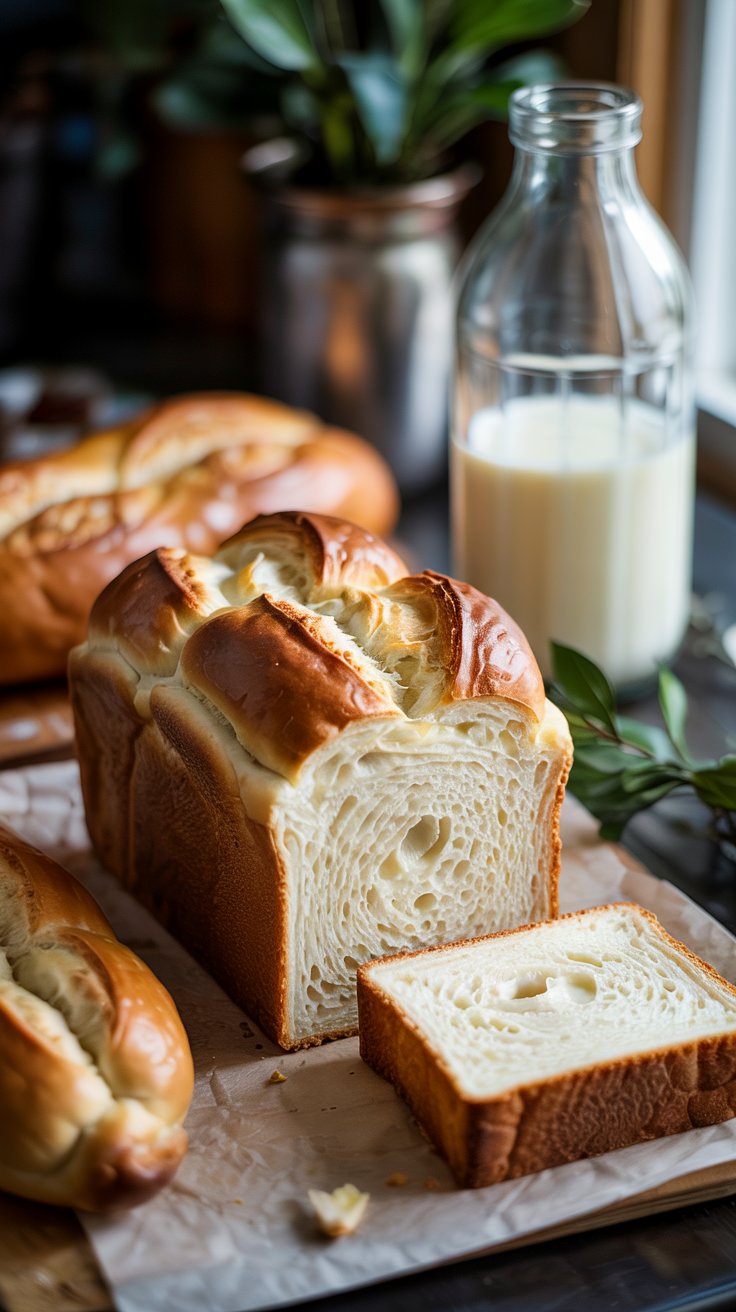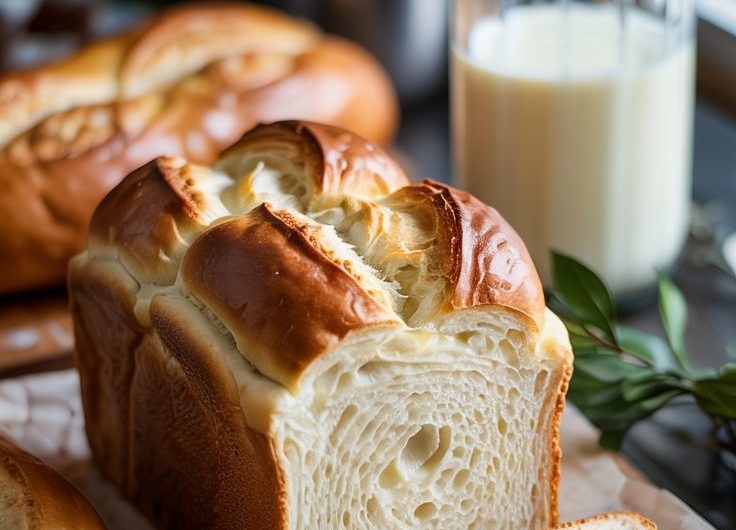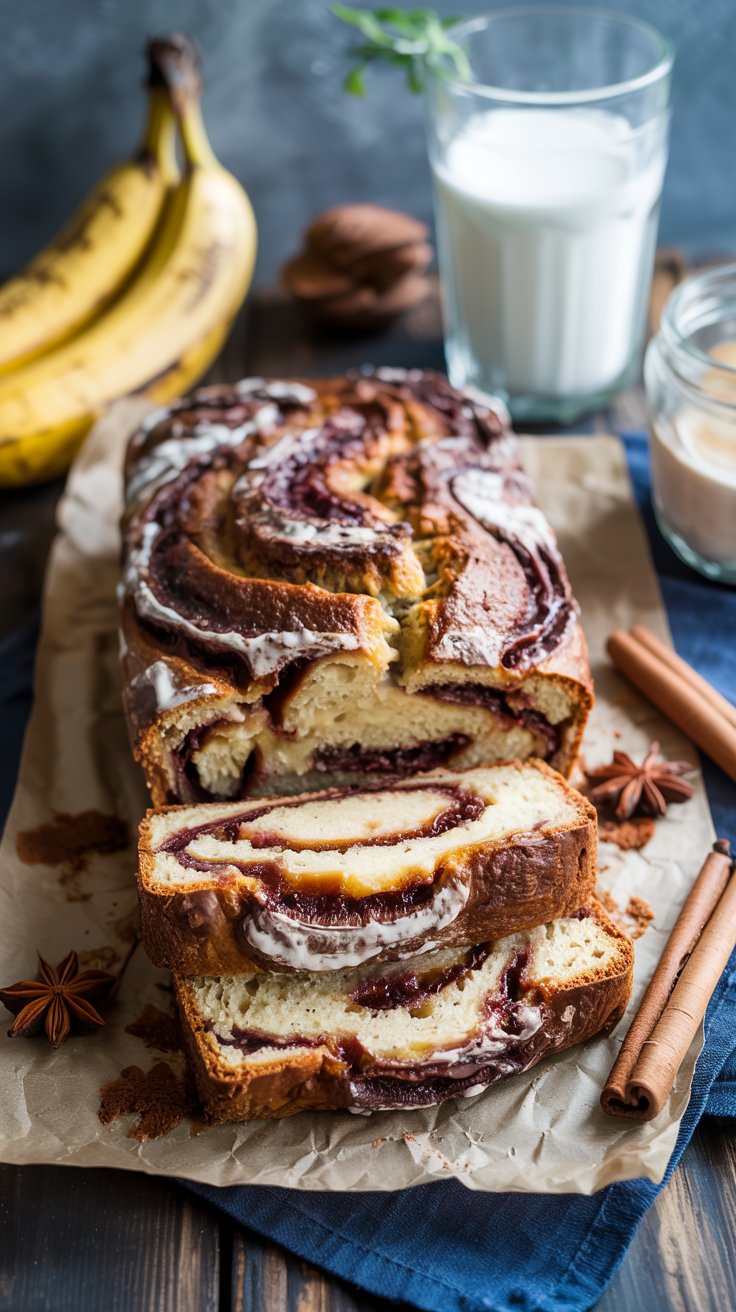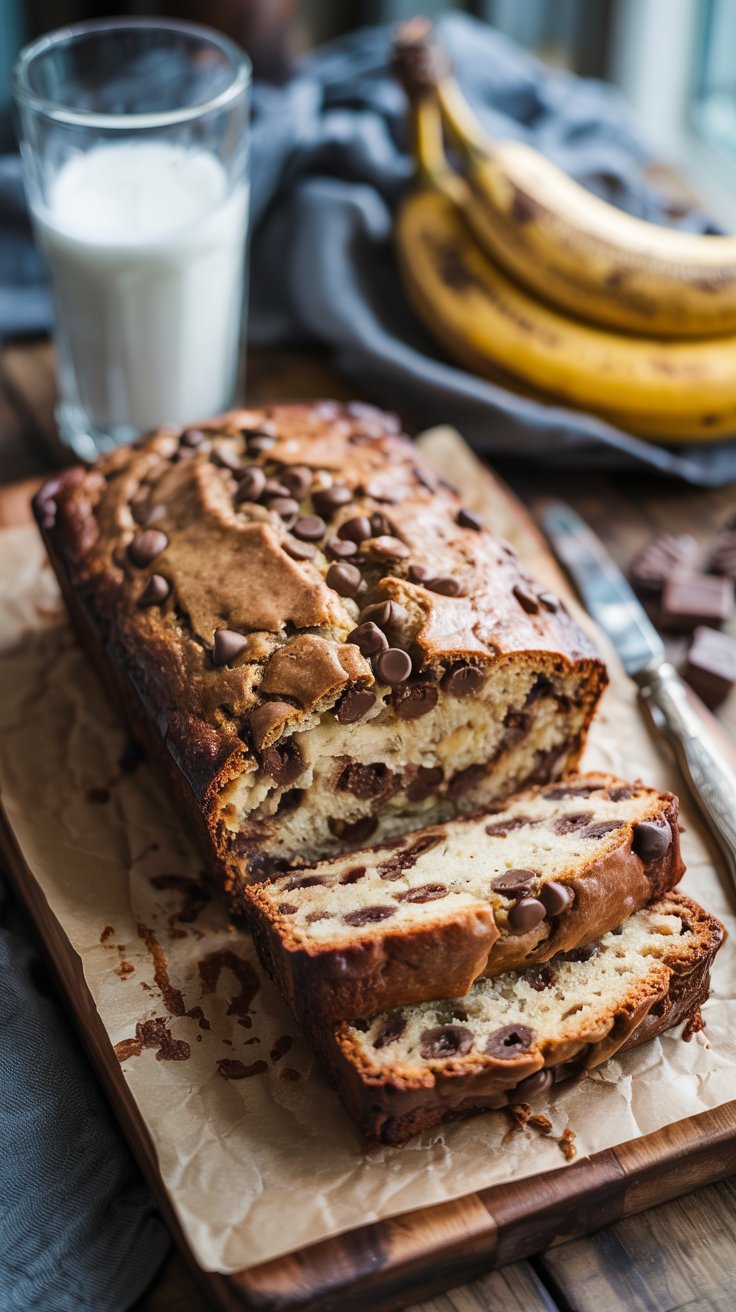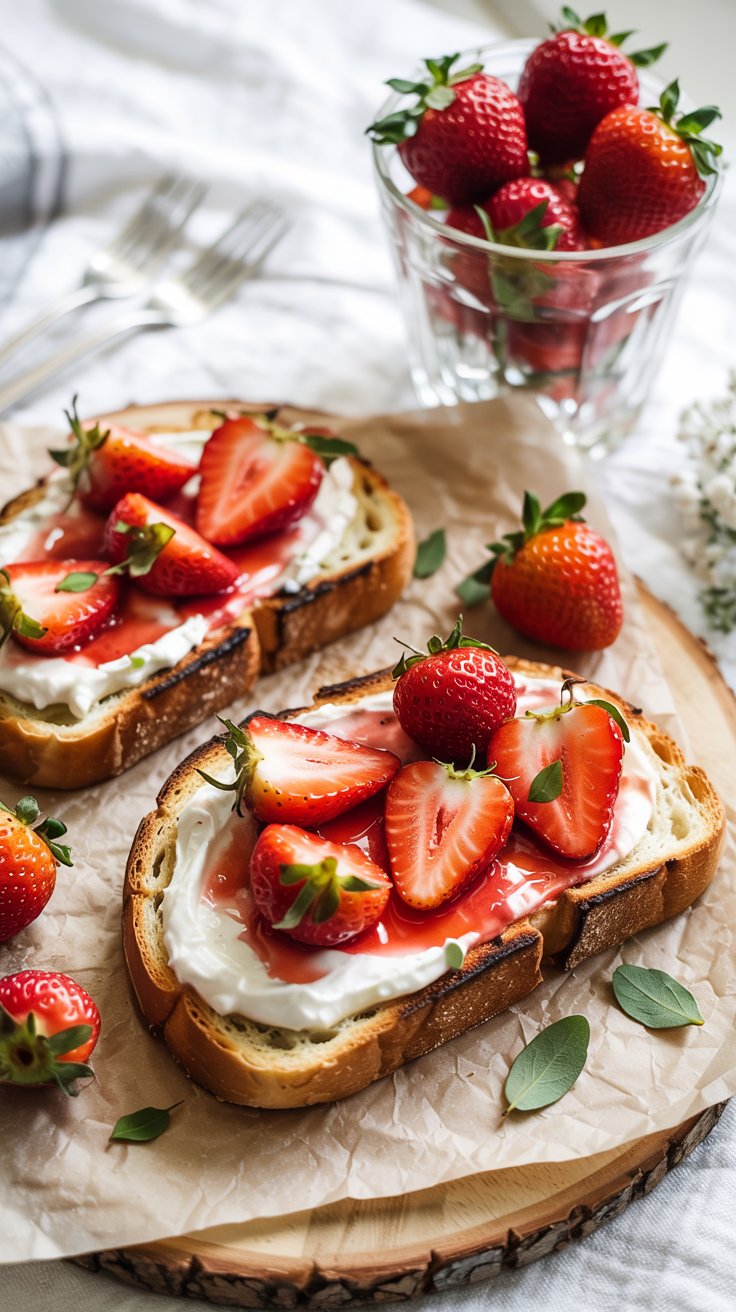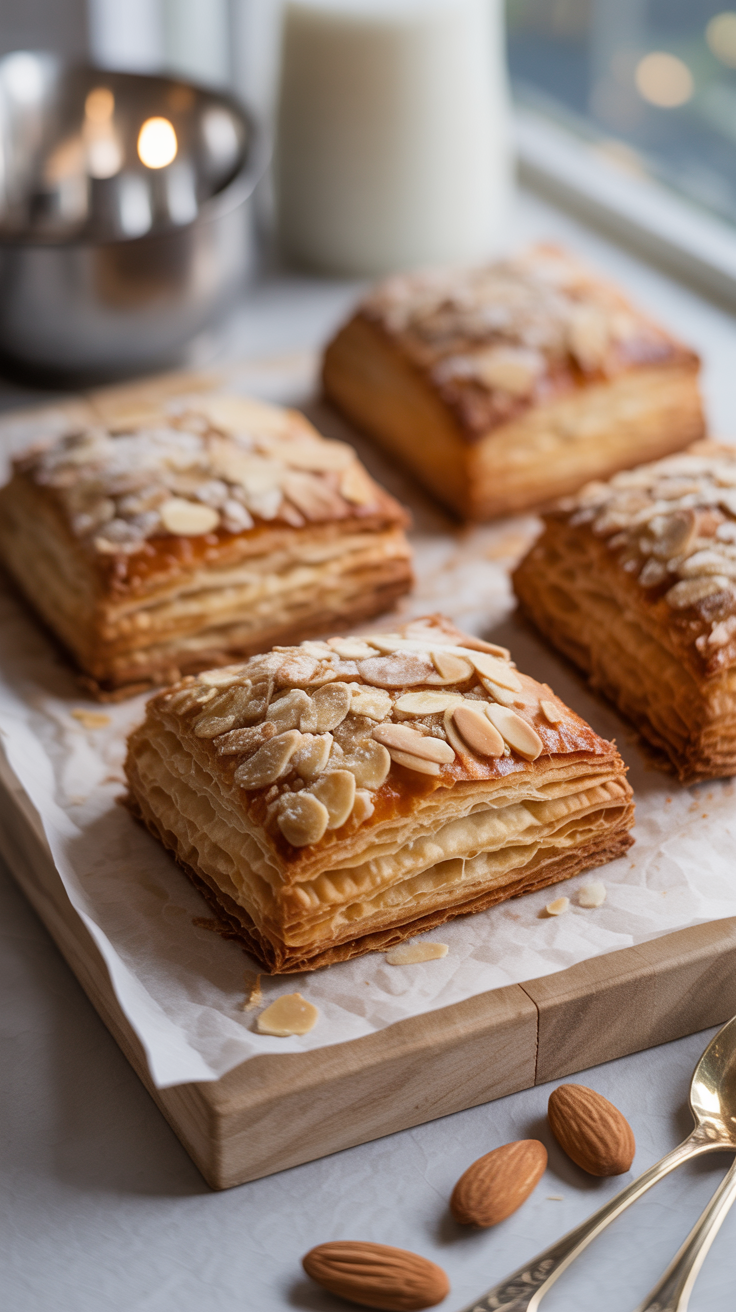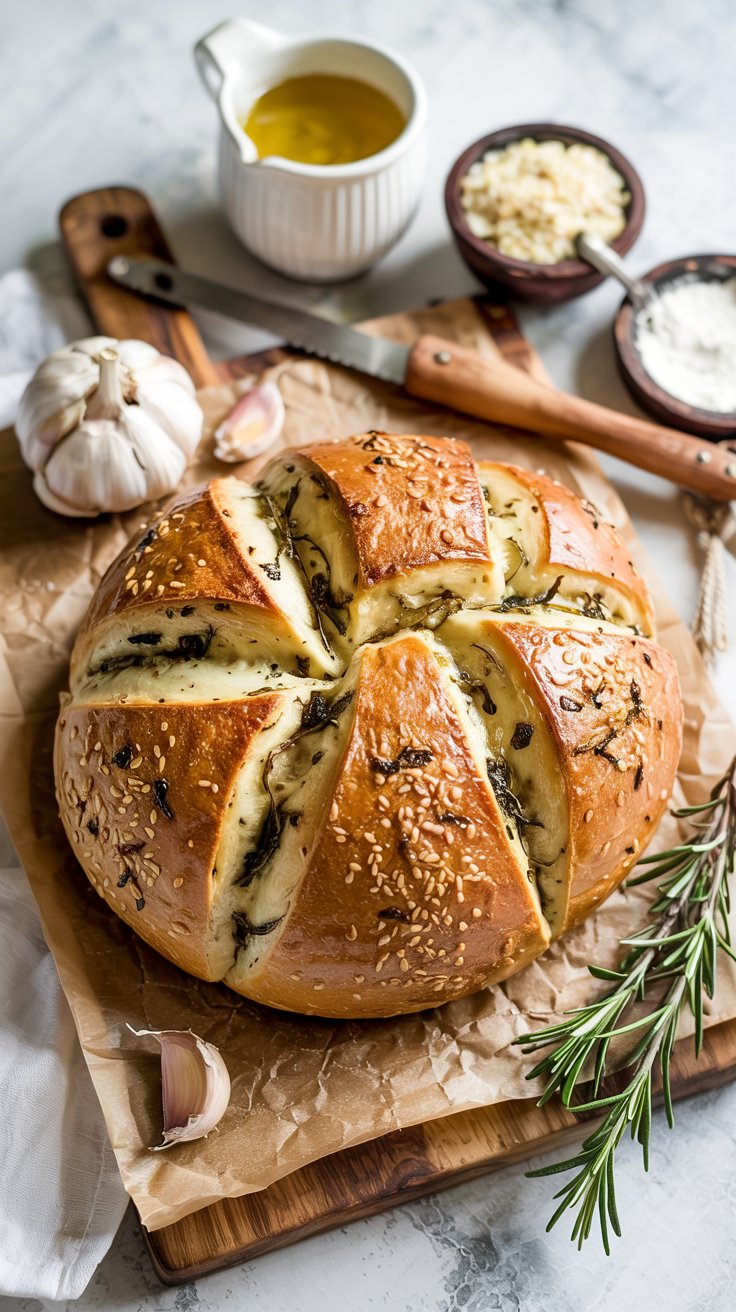Milk Bread Loaf
This Milk Bread Loaf is the kind of bread you slice while it’s still slightly warm, and the first piece disappears before you even find the butter. Expect a soft, springy crumb, a gentle hint of sweetness, and a golden top that stays tender for days. The method below uses a quick “tangzhong” paste to lock in moisture. Nothing fancy. Just dependable, cloud-soft bread you’ll make more than once.
Ingredients for this Milk Bread Loaf
Tangzhong (the moisture boost)
- 25 g bread flour (about 3 tbsp)
- 120 ml whole milk (1/2 cup)
Dough
- 320 g bread flour (about 2 2/3 cups), plus a little for dusting
- 45 g granulated sugar (3 tbsp)
- 7 g instant yeast (2 1/4 tsp)
- 6 g fine sea salt (1 tsp)
- 1 large egg, room temperature
- 120 ml warm whole milk (1/2 cup, about 38–40°C)
- 45 g unsalted butter, very soft (3 tbsp)
To finish
- 1 tbsp milk for brushing, or 1 egg beaten with 1 tsp milk
- Optional: 1 tbsp soft butter for brushing after baking
Pan: 8.5 x 4.5 in loaf pan (21.5 x 11.5 cm) or similar.
Instructions
Make the tangzhong. In a small saucepan, whisk 25 g flour with 120 ml milk until smooth. Set over medium-low heat and cook, whisking, until thick like pudding and the whisk leaves lines, 2–3 minutes. It should reach about 65°C, but you don’t need a thermometer if it thickens nicely. Scrape into a bowl and let cool to lukewarm. A few gentle breaths. No rush.
Mix the dough. In the bowl of a stand mixer (or a large bowl), combine 320 g flour, sugar, instant yeast, and salt. Add the egg, warm milk, and the cooled tangzhong. Mix on low until a rough dough forms, 1–2 minutes.
Knead and add butter. With the mixer on medium-low, knead 5 minutes. Add the soft butter in small pieces, letting each piece disappear before the next. Continue kneading 6–8 minutes more, until the dough is smooth, elastic, and slightly tacky but clears the bowl. If kneading by hand, it’ll feel sticky at first. Keep going; it comes together. You’re aiming for a windowpane that stretches thin without tearing.
First rise. Shape the dough into a ball and place in a lightly oiled bowl. Cover and let rise in a warm spot until puffy and about doubled, 60–90 minutes. If your kitchen is cool, give it a little extra time. No stress.
Shape. Gently deflate the dough onto a lightly floured surface. Divide into 3 or 4 equal pieces. For each piece: pat into a rectangle, fold the short edges toward the center like a letter, then roll up tightly into a short log. Place the logs seam-side down in the greased loaf pan, side by side.
Second rise. Cover and let rise until the dough domes about 2–3 cm above the pan rim and springs back slowly when touched, 45–75 minutes, depending on room temperature.
Preheat and bake. Heat the oven to 175°C/350°F. Lightly brush the top with milk or egg wash. Bake 28–35 minutes until deep golden and the center reaches about 88–93°C/190–200°F. If the top browns early, tent loosely with foil. The kitchen will smell like a bakery. That’s your timer too.
Finish and cool. Optional: brush the hot loaf with a little soft butter for a gentle sheen. Cool in the pan 10 minutes, then move to a rack. Let it cool at least 45 minutes before slicing for the fluffiest crumb. If you can wait. I rarely do.
Cook and Prep Times
- Active prep: 25–30 minutes
- First rise: 60–90 minutes
- Second rise: 45–75 minutes
- Bake time: 28–35 minutes
- Total time: about 2.5 to 3.5 hours, mostly hands-off
Nutritional information
Approximate per slice, 12 slices per loaf:
- Calories: 190
- Carbohydrates: 28 g
- Protein: 6 g
- Fat: 6 g
- Saturated fat: 3 g
- Sugar: 5 g
- Sodium: 220 mg
These numbers are estimates and will vary with brands and exact measurements.
Frequently asked questions
Can I use all-purpose flour instead of bread flour?
Yes. The loaf will still be soft, just a touch less bouncy. Start with the same amount by weight. If the dough feels too sticky, dust with a tablespoon of flour while kneading. If it feels stiff, add 1–2 tsp milk. Small nudges make a difference.
What if I only have active dry yeast?
No problem. Use the same amount, but dissolve it first in the warm milk with a pinch of sugar and let it sit 5–10 minutes until foamy. Then proceed. Rise times may be a little longer. Let the dough, not the clock, tell you when it’s ready.
How do I store and freeze this Milk Bread Loaf?
Once fully cool, store in an airtight bag at room temperature up to 3 days. For longer storage, slice the loaf, wrap well, and freeze up to 2 months. Toast straight from frozen or let slices thaw on the counter for 10–15 minutes. Warm bread, instant mood lift.
Milk Bread Loaf
1
raciones25
minutes28
minutes190
kcalThis Milk Bread Loaf is the kind of bread you slice while it’s still slightly warm, and the first piece disappears before you even find the butter. Expect a soft, springy crumb, a gentle hint of sweetness, and a golden top that stays tender for days. The method below uses a quick “tangzhong” paste to lock in moisture. Nothing fancy. Just dependable, cloud-soft bread you’ll make more than once.
Ingredients
- Tangzhong (the moisture boost)
25 g bread flour (about 3 tbsp)
120 ml whole milk (1/2 cup)
- Dough:
320 g bread flour (about 2 2/3 cups), plus a little for dusting
45 g granulated sugar (3 tbsp)
7 g instant yeast (2 1/4 tsp)
6 g fine sea salt (1 tsp)
1 large egg, room temperature
120 ml warm whole milk (1/2 cup, about 38–40°C)
45 g unsalted butter, very soft (3 tbsp)
- To finish:
1 tbsp milk for brushing, or 1 egg beaten with 1 tsp milk
Optional: 1 tbsp soft butter for brushing after baking
Directions
- Make the tangzhong. In a small saucepan, whisk 25 g flour with 120 ml milk until smooth. Set over medium-low heat and cook, whisking, until thick like pudding and the whisk leaves lines, 2–3 minutes. It should reach about 65°C, but you don’t need a thermometer if it thickens nicely. Scrape into a bowl and let cool to lukewarm. A few gentle breaths. No rush.
- Mix the dough. In the bowl of a stand mixer (or a large bowl), combine 320 g flour, sugar, instant yeast, and salt. Add the egg, warm milk, and the cooled tangzhong. Mix on low until a rough dough forms, 1–2 minutes.
- Knead and add butter. With the mixer on medium-low, knead 5 minutes. Add the soft butter in small pieces, letting each piece disappear before the next. Continue kneading 6–8 minutes more, until the dough is smooth, elastic, and slightly tacky but clears the bowl. If kneading by hand, it’ll feel sticky at first. Keep going; it comes together. You’re aiming for a windowpane that stretches thin without tearing.
- First rise. Shape the dough into a ball and place in a lightly oiled bowl. Cover and let rise in a warm spot until puffy and about doubled, 60–90 minutes. If your kitchen is cool, give it a little extra time. No stress.
- Shape. Gently deflate the dough onto a lightly floured surface. Divide into 3 or 4 equal pieces. For each piece: pat into a rectangle, fold the short edges toward the center like a letter, then roll up tightly into a short log. Place the logs seam-side down in the greased loaf pan, side by side.
- Second rise. Cover and let rise until the dough domes about 2–3 cm above the pan rim and springs back slowly when touched, 45–75 minutes, depending on room temperature.
- Preheat and bake. Heat the oven to 175°C/350°F. Lightly brush the top with milk or egg wash. Bake 28–35 minutes until deep golden and the center reaches about 88–93°C/190–200°F. If the top browns early, tent loosely with foil. The kitchen will smell like a bakery. That’s your timer too.
- Finish and cool. Optional: brush the hot loaf with a little soft butter for a gentle sheen. Cool in the pan 10 minutes, then move to a rack. Let it cool at least 45 minutes before slicing for the fluffiest crumb. If you can wait. I rarely do.
Notes
- Pan: 8.5 x 4.5 in loaf pan (21.5 x 11.5 cm) or similar.

